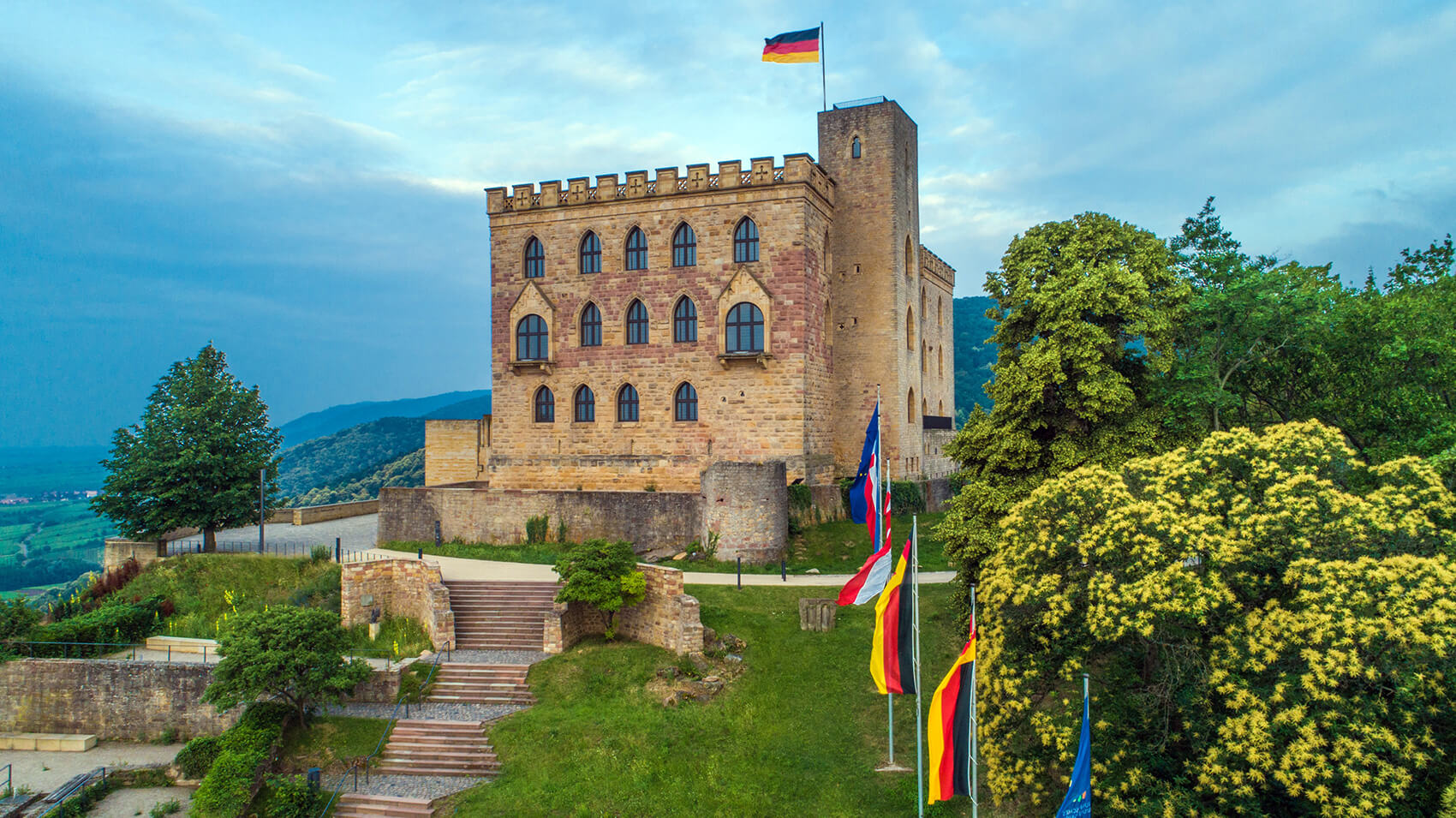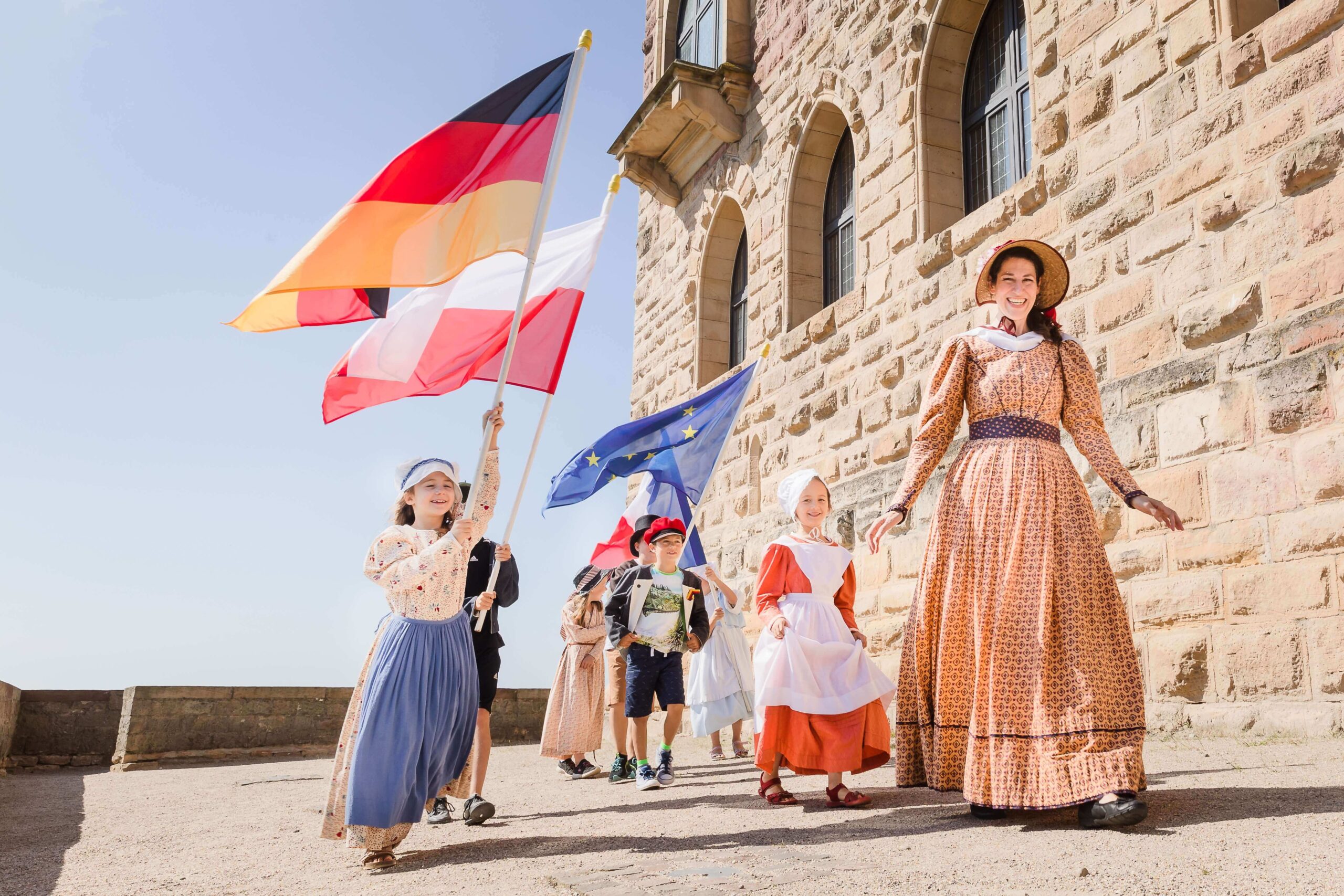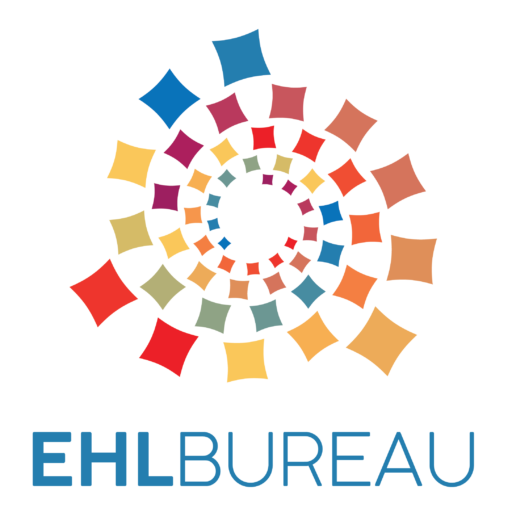This website uses cookies so that we can provide you with the best user experience possible. Cookie information is stored in your browser and performs functions such as recognising you when you return to our website and helping our team to understand which sections of the website you find most interesting and useful.
Hambach Castle



The EHL Site
Hambach Castle is a vibrant site that celebrates the history of democracy in Germany and Europe and is one of the major tourist attractions in Rhineland-Palatinate. Ever since the Hambach Festival was celebrated here in 1832, Hambach Castle has been regarded as the cradle of German democracy. Designated with the European Heritage Label, it furthermore epitomizes the history and ideals of Europe.
On May 27, 1832, up to 30,000 people gathered on the hill of Hambach Castle to stand up for a united Germany, basic political rights and a Europe united in solidarity. Among them were men and women from all social classes, people from Germany, France and Poland. It was the first large popular assembly in German history.
Inside the castle, an exhibition explains why Hambach Castle is considered the cradle of German democracy. The events of the Hambach Festival are conveyed with the many exhibit items, hands-on stations, and options to explore in depth. The regional roots of the festival become just as apparent as its national and European dimensions. The second part of the exhibit bridges from 1832 to the present day. In keeping with the motto “Show your colours”, a number of interactive stations invite visitors to participate, vote, comment, and check their own courage of conviction. The topics are Hambach topics, such as freedom of expression, freedom of the press, black–red–gold, and Europe.
The Spirit of Hambach — or the courageous advocating for liberal and democratic demands — is noticeable even today and a conscious experience within the framework of the many tours and workshops for children, young people and adults. Be it on a public tour or private group tour or in a workshop, the aim is to inspire the visitors with history.
The Hambach Castle Foundation also offers a diverse program of events from political discussions to political cabarets, from book reviews to classical concerts or theater for children.
European dimension
The Hambach Festival owed its European character not only to the pro-European shouts of some speakers (“Three, three cheers for the confederate, republican Europe!”; “Fatherland, people’s sovereignty and League of Nations – Cheers!”), but also to the presence of French and Polish people who shaped the image of the Hambach Festival with their flags, greetings and speeches. The Polish freedom fighters had to flee their country after the November revolt for Polish independence was put down and were received with great solidarity and enthusiasm on their journey to France, also at the Hambach Festival.
The participants of Hambach Festival spoke out for a unified Germany, civil rights and liberties. At the same time, they were already forming an early idea of a European ideal based on peaceful co-operation between nations that are all equal.
Hambach Castle – and the Hambach Festival, which brought together people from Germany, France and Poland – is a symbol of the struggle for civil liberties, and a gathering place for those committed to equalitiy, tolerance and democracy in Germany and Europe.
The organization
Hambach Castle is run by the Hambach Castle Foundation which was founded on February 1, 2002 with the goal of preserving and maintaining Hambach Castle as a significant historical site for the development of democracy in Germany and European collaboration. This is achieved primarily through the permanent exhibit in Hambach Castle, a broad event program and numerous educational museum activities.
The benefactors are the state of Rhineland-Palatinate, the city of Neustadt an der Weinstraße, the district of Bad Dürkheim, and the Palatinate District Association. The Hambach Castle Foundation is funded by the Federal German Government Commissioner for Culture and Media based on a decision passed by German Parliament.
